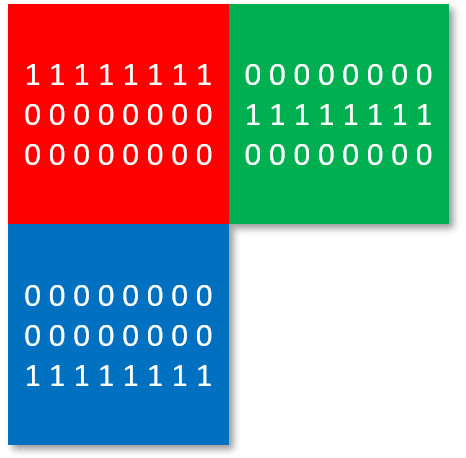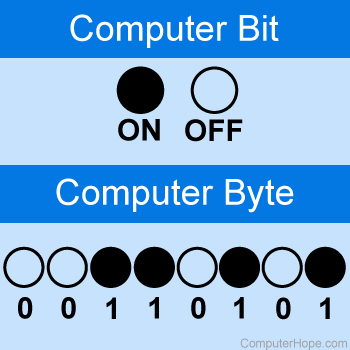
- #256 bits in a byte how to
- #256 bits in a byte archive
- #256 bits in a byte password
- #256 bits in a byte plus
Or even if he determinates that IV is needed and adds some string iv as encryption function`s fourth parameter and than adds hex representation of iv as parameter in openssl command line : # openssl enc -aes-128-cbc -d -in file.encrypted -base64 -A -pass pass:123 Or even if he determinates that base64 encoded file is represented in one line and tries: # openssl enc -aes-128-cbc -d -in file.encrypted -base64 -pass pass:123 Or even if he/she determinates that openssl_encrypt output was base64 and tries: # openssl enc -aes-128-cbc -d -in file.encrypted -pass pass:123 Many users give up with handilng problem when openssl command line tool cant decrypt php openssl encrypted file which is encrypted with openssl_encrypt function.įor example how beginner is encrypting data:Īnd then how beginner is trying to decrypt data from command line: Create Two Random Keys And Save Them In Your Configuration File. It Is Almost Impossible To Crack Your Encryption. This Is The Most Secure Way To Encrypt And Decrypt Your Data, Hopefully it will help anyone looking to get started with this powerful library. It should lay the foundations for better understanding and making effective use of openssl with PHP.
#256 bits in a byte how to
There's a simple Cryptor class on GitHub called php-openssl-cryptor that demonstrates encryption/decryption and hashing with openssl, along with how to produce and consume the data in base64 and hex as well as binary.
#256 bits in a byte password
Hash the chosen encryption key (the password parameter) using openssl_digest() with a hash function such as sha256, and use the hashed value for the password parameter. Pass OPENSSL_RAW_DATA for the flags and encode the result if necessary after adding in the iv data. Join the iv data to the encrypted result and extract the iv data again when decrypting.

AES uses 16 byte blocks, so you need 16 bytes for the iv.

mcrypt_create_iv() is one choice for random data. Use different random data for the initialisation vector each time encryption is made with the same key. aes-256-gcm is preferable, but not usable until the openssl library is enhanced, which is due in PHP 7.1 This avoids potential security issues (so-called padding oracle attacks) and bloat from algorithms that pad data to a certain block size.
#256 bits in a byte plus
There's a lot of confusion plus some false guidance here on the openssl library.Īes-256-ctr is arguably the best choice for cipher algorithm as of 2016.
#256 bits in a byte archive
Getting Started Introduction A simple tutorial Language Reference Basic syntax Types Variables Constants Expressions Operators Control Structures Functions Classes and Objects Namespaces Enumerations Errors Exceptions Fibers Generators Attributes References Explained Predefined Variables Predefined Exceptions Predefined Interfaces and Classes Predefined Attributes Context options and parameters Supported Protocols and Wrappers Security Introduction General considerations Installed as CGI binary Installed as an Apache module Session Security Filesystem Security Database Security Error Reporting User Submitted Data Hiding PHP Keeping Current Features HTTP authentication with PHP Cookies Sessions Dealing with XForms Handling file uploads Using remote files Connection handling Persistent Database Connections Command line usage Garbage Collection DTrace Dynamic Tracing Function Reference Affecting PHP's Behaviour Audio Formats Manipulation Authentication Services Command Line Specific Extensions Compression and Archive Extensions Cryptography Extensions Database Extensions Date and Time Related Extensions File System Related Extensions Human Language and Character Encoding Support Image Processing and Generation Mail Related Extensions Mathematical Extensions Non-Text MIME Output Process Control Extensions Other Basic Extensions Other Services Search Engine Extensions Server Specific Extensions Session Extensions Text Processing Variable and Type Related Extensions Web Services Windows Only Extensions XML Manipulation GUI Extensions Keyboard Shortcuts ? This help j Next menu item k Previous menu item g p Previous man page g n Next man page G Scroll to bottom g g Scroll to top g h Goto homepage g s Goto search


 0 kommentar(er)
0 kommentar(er)
